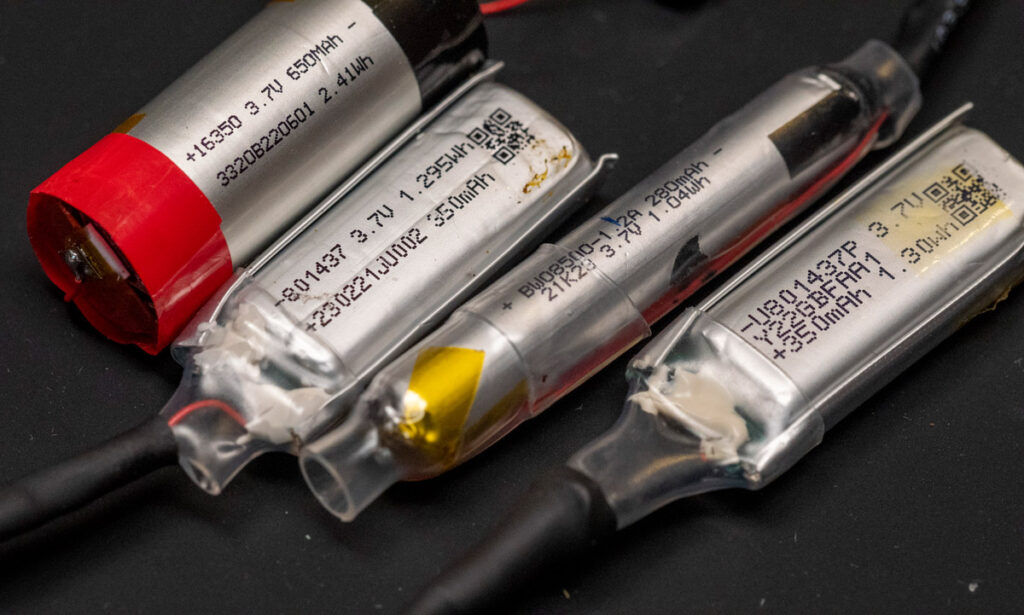The difference between refurbished vape batteries and the better batteries you can buy is the protection circuitry, or lack thereof. Lithium batteries can be damaged if they are depleted, overcharged, or charged too quickly. A good hobby battery has a small circuit that shuts off the power if the voltage drops too low, and an overcurrent cutout to protect against short circuits and dangerously high currents. These e-cig batteries usually don’t have such a feature, so you can either add that circuit yourself or use a charger that has protection circuitry and is set to the appropriate charging speed for your battery. The battery must remain connected.

We added tape and heat shrink to the exposed contacts to prevent accidental short circuits after the battery is removed from the housing. Obviously it’s not a good idea to apply any amount of heat to these batteries, so I was very wise.

Electrical tape is also not the best kind. You’ll need to use high-temperature Kapton tape, but electrical tape is still better than cramming all those bare batteries together in a box.
When device designers put these together, they knew that the current draw would never exceed that of the air sensor and heater. However, if these batteries are to be reused, thermal runaway can be a huge concern. If a circuit draws more current than it is rated for (a conservative rule of thumb is battery capacity per hour), it can start an internal unstoppable chain reaction. Batteries can cause explosions. Remember Samsung Galaxy Note 7?
In conclusion, if you see these devices lying around, we recommend picking them up and at least properly recycling your e-waste and perhaps using it to power your next solar-powered device.








